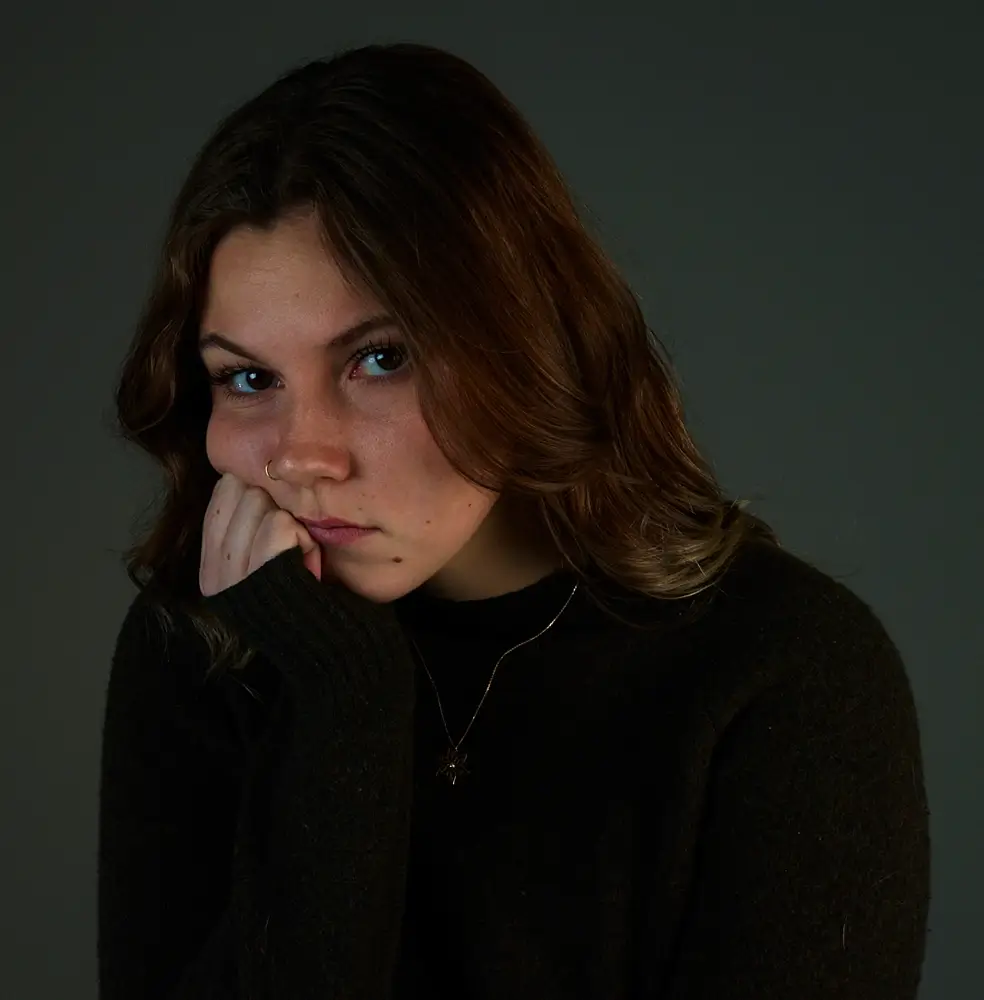F. Bessma Rhea is her father’s second-born daughter (first-born son), her mother’s last line of defense at the dinner table, and her sister’s favorite fun house mirror. She is the first person to speak in a crowded elevator and the last person to get a word in edgewise. Bessma has always been a big talker, but her preferred method of communication is using the visual language of photography.
F. Bessma Rhea graduated from Montana State University in 2025, achieving a Bachelor of Fine Arts in Integrated Lens Based Media from the School of Film and Photography. Although Bessma spent the last four and a half years in Bozeman, Montana, Bessma was born, raised, and is now currently residing in San Diego, California. Her photographic journey has encompassed an exploration of various mediums, ranging from silver gelatin prints and digital flash photography, to alternative process and chromogenic printing in the color darkroom. From this exploration she learned to cultivate her aesthetic, her relationship to photography, and to refine and utilize her voice.
In her own reflection, she sees herself as a detective and a scientist, but to the outside world, she is an artist and a photographer. With her camera she will continue to investigate and theorize about the world she’s a part of, and where she fits in. But in the moments she’s not photographing, she enjoys filthy explicit music – and classic literature.
Gutter Dutchess:
I organize my environment in the frame and listen to when the world tells me I am a woman. I consider questions like, “How do I photograph a homewrecker?” and “What is inherently aggressive about a haircut?”. I desperately follow curiosity like the north star. GUTTER DUCHESS is a punk portrait series represented by twenty color film images of friends, best friends, my sister, my mother, myself, and moments in between. From doctor’s appointments to dumpster diving, I comprehend a women’s world through a lens that is candid, impulsive, crude, jovial, contrite, and desperate to reject assimilation to any one characteristic.
As I photograph, I find myself constantly fighting with my images because I am a pessimistic, hotheaded, angry little person. However, in these photographs, I am continuously confronted with an abundance of love from the women in my life, who are proof of the untamable female spirit. This work is messy, unglamorous, and a raw exploration of womanhood. Favoring emotional truth over aesthetic polish, my series sprinkles clues of the fallacy of attempting feminine definition.
Artist Philosophy
Photography is a method of comprehension, I want to understand what is here. I have always been intrigued by the surreal but perhaps that comes from a bigger desire to turn the psyche outward, to make the invisible visible. I am driven by the ability to push the boundaries of sensation through the uncanny, visceral, and provocative. Visual arts is my language to answer life’s biggest questions. Every series is a conversation and if photography is to speak then a camera is the tongue. I have completely fallen in love with the medium, and without the tongue there is no voice.
